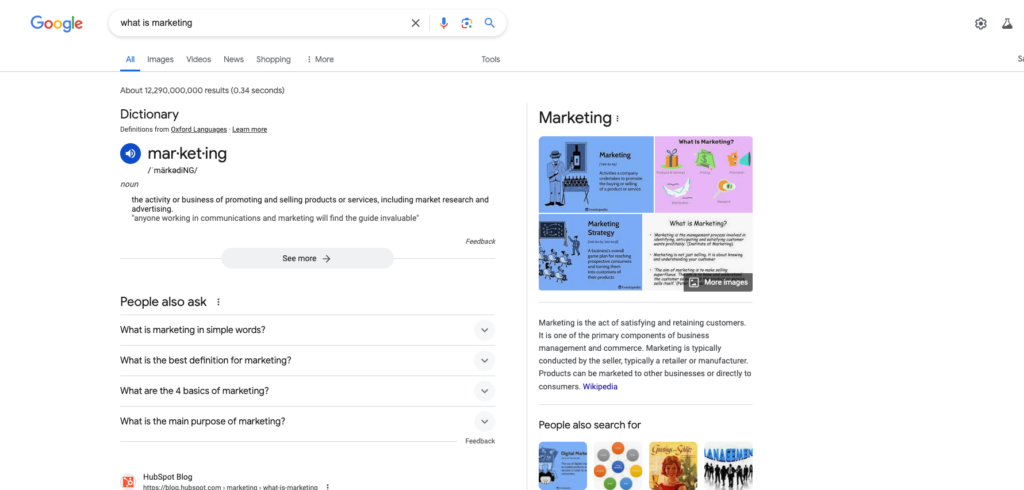Industry wide, marketers are struggling to keep up with the ever-changing landscape of search engines. Search engine algorithms are constantly being updated, which means that the way results are ranked is always changing—something that can make it challenging for website owners to rank high in SERPs, or search engine result pages. As search engines improve their understanding of searcher intent and deliver more complex results, SERPs might include things like knowledge panels, featured snippets, and image results. These updates are all tailored to the specific query, allowing users to get to the answer to their questions without even clicking, while improving voice search accuracy.

While SEO continues to be an evolution of improved user experience (just like SERPs), websites need to keep pace so they don’t get lost in the shuffle. Here are four SEO tips and tricks for your financial site to stay relevant:
1. Content is King (and Queen).
Google prioritizes websites with good user experience, expertise, authoritativeness, and trustworthiness (E-E-A-T). People search for informative and educational content online. Create blog posts, articles, and guides that answer common questions, address financial concerns, and explain your services clearly and helpfully. Target long-tail keywords that reflect specific searches users might make.
Keep your content fresh with regular updates that reflect changes in the financial landscape and address current financial topics.
Insider Tip: As you publish quality content, link to other relevant pages, services, and products on your site. You can also promote this content on social media profiles to drive people to your site. Keeping users engaged and on your site for longer also helps build authority with search engines.
2. Visibility Banks on the Technical.
Make sure your banking website is mobile-friendly. Many users access financial information on their phones. Financial security is also paramount, so ensure your website uses HTTPS encryption to protect user data. Focusing on user experience can be as simple as making things more visually appealing, easier to navigate and faster to load.
If your institution has physical locations, optimize your Google Business Profile and local listings for each branch. Ensure consistent name, address and phone number (NAP) information across the web for local searchers.
Search results can be personalized based on your search history and location, among other factors. With personalization, search results will be tailored for you based on your activity. Since Google can pinpoint searchers’ locations, creating content optimized to your branch locations allows your bank or credit union website to rank for more long-tail keywords.
Insider Tip: Go beyond generic banking terms. Research keywords with local intent, like “[city name] + mortgage broker” or “[neighborhood name] + personal loans.” Review the People Also Ask sections of the results and related searches for additional ideas. These keywords can be added throughout your site pages in meta elements and in page copy.
3. Build Authority and Trust.
Encourage customer reviews on Google, Yelp and other platforms to keep a positive online reputation. Address negative reviews promptly and professionally.
Get listed in relevant financial directories and websites to create citations and backlinks: High-quality backlinks from trusted sources can boost your SEO ranking.
Insider Tip: Use AI to improve user experience—allow AI to pull common questions your customers are asking to inform content you create on FAQ pages, blog posts and tutorials. You can also use customer questions to help improve the user experience on the most interactive pages of your site by letting AI tell you the areas users struggle with the most. AI can also help translate pages of your site to various languages allowing you to target different demographics and expand the reach of your products.
4. Be Calculated.
Tools like mortgage affordability calculators, budgeting tools and retirement planning calculators tend to rank well in search engine result pages. These types of tools are great to feature in blog posts and interactive pages. Infographics, studies, videos and PDFs can also rank in the SERPs and image results as well.
The tool should target a specific financial need or question, like “mortgage affordability” or “retirement savings calculator.” Keep it simple by making it easy to understand and navigate even for people with limited financial knowledge. The tool’s content and functionality should be optimized for relevant keywords with high search volume and should have a mobile-friendly design.
Insider Tip: Perform a search for tools and services offered at your credit union or bank and check the image results to see the types of graphics and images that are performing well.
SEO is an ongoing process. By consistently implementing these strategies and monitoring results, you can gradually improve your financial institution’s website ranking and attract more qualified leads.
